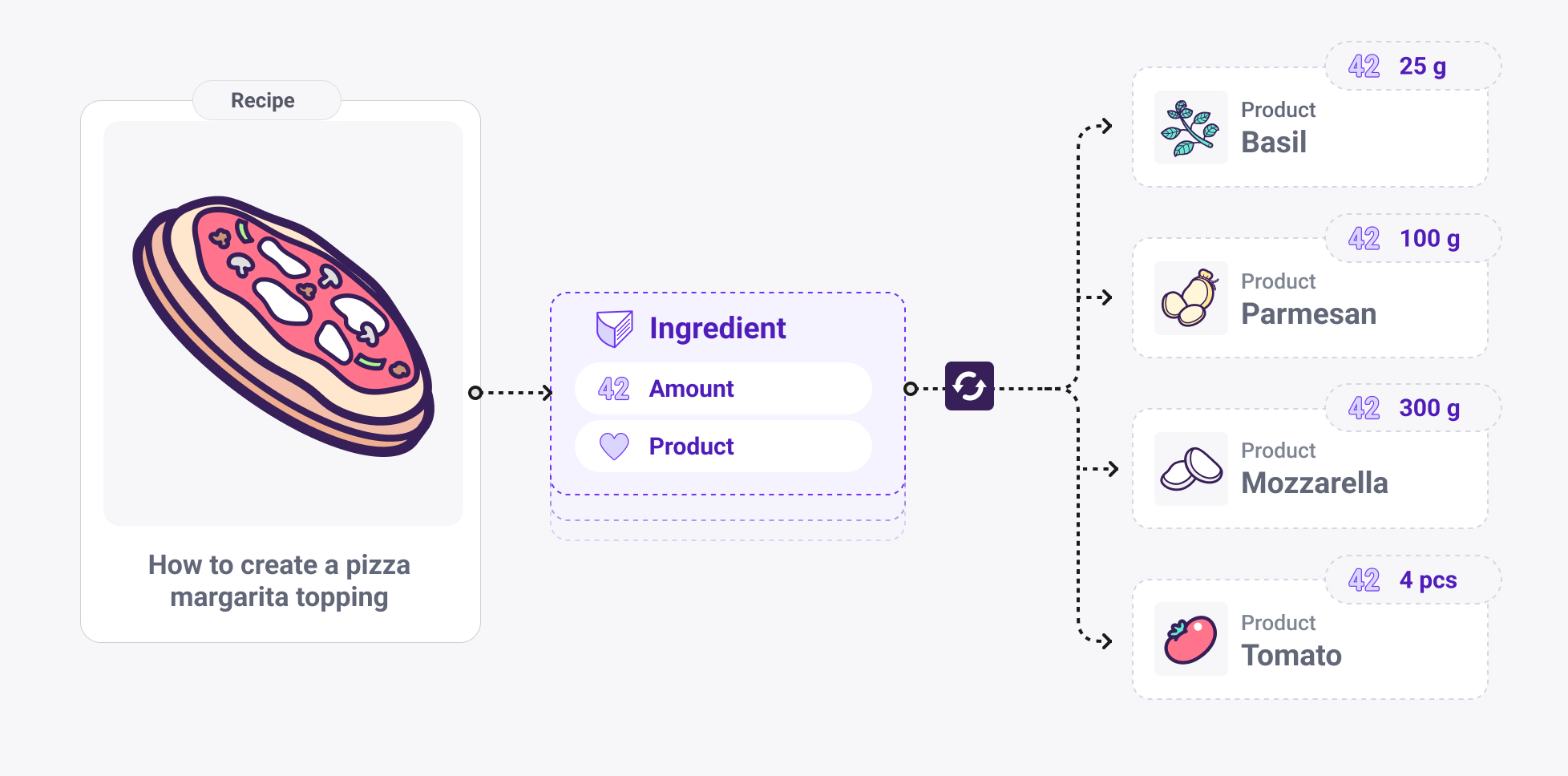Quantised classification bridge
The Quantised Classification Bridge is a design pattern for modelling composite products in Crystallize. It lets you link one product to another while also expressing how much of each item is included. This enables structured storytelling, nutrition or material breakdowns, bill of materials, kits and bundles, and manufacturing style assemblies. The pattern builds on standard relations, but adds measurable quantity to each link, making the relationship both semantic and precise.

Context and Motivation
Many products are not standalone. They are made of ingredients, parts, modules or accessories. While a simple relation can link items together, it does not explain the composition. The Quantised Classification Bridge solves this by relating products with an attached quantity. This allows you to keep each item defined only once, while using it as a building block in multiple contexts.
This supports clear hierarchy, single source of truth, easier localisation and more consistent updates across your product catalog.
The Pattern Explained
A product shape uses a repeating chunk component to define each ingredient or part.
Each entry in the repeating chunk contains:
- A quantity value (number)
- A unit (pieces, grams, meters, etc)
- A relation to another SKU (product or product variant)
This creates a quantised bridge between two items. The pattern is flexible enough to support many cases:
- Ingredients in a recipe
- Bill of Materials (BOM) for manufactured goods
- Furniture kits or modular bundles
- Exploded parts lists for repair documentation
Because the relationship is structured, it can be displayed consistently in the Pretty View and easily queried through the Discovery API for downstream output such as storefronts, manufacturing systems or enrichment models.
Benefits
The Quantised Classification Bridge helps maintain clarity and reusability in your product data.
- Reuse linked items across multiple products without duplication
- Enable detailed storytelling on product detail pages
- Support automated summarisation or rollups (nutrition totals, cost totals, material lists)
- Localisation becomes simpler since the relationship structure remains constant
- AI enrichment models can extract meaning more accurately when data is structured